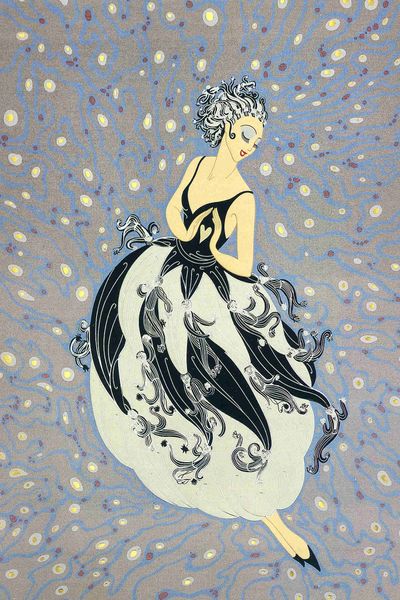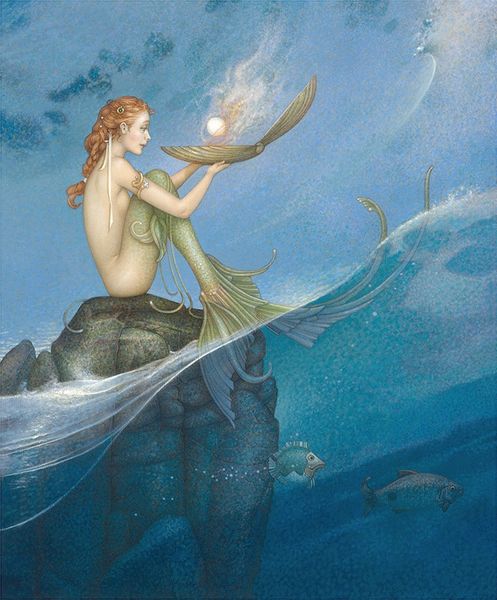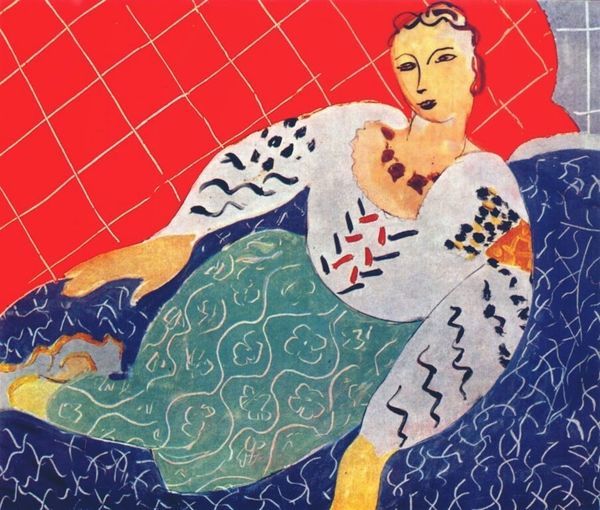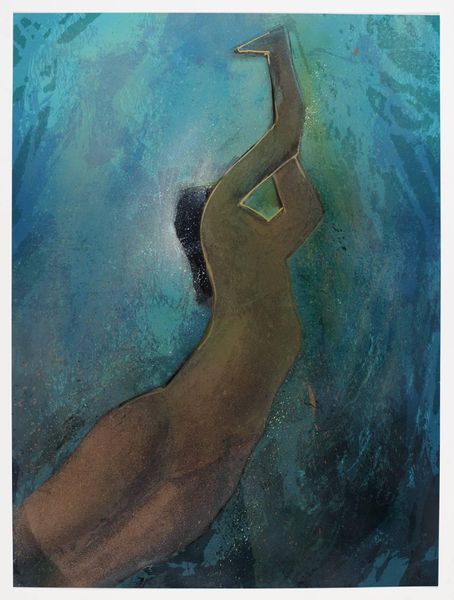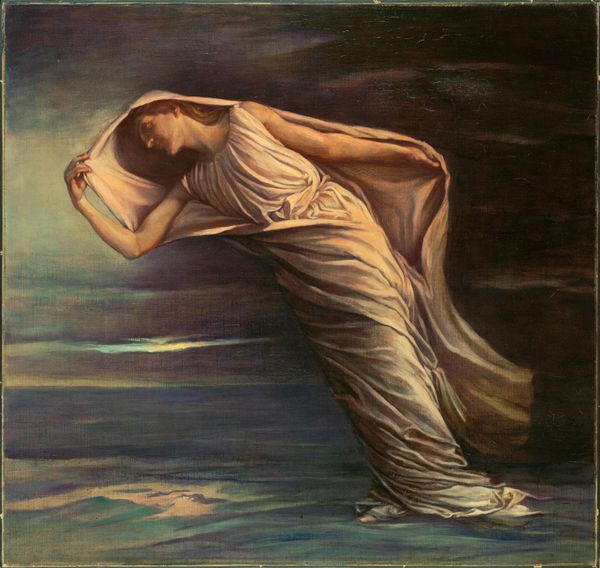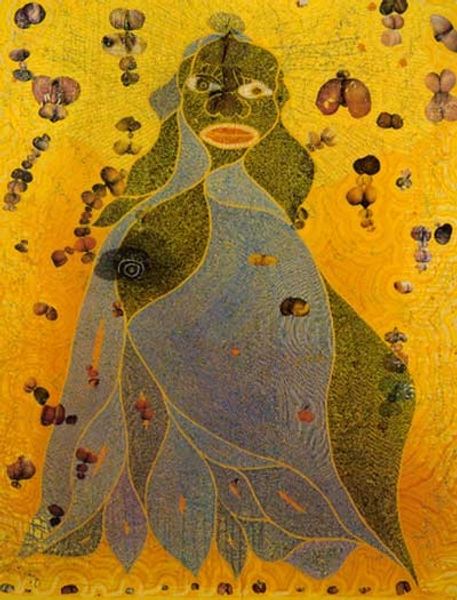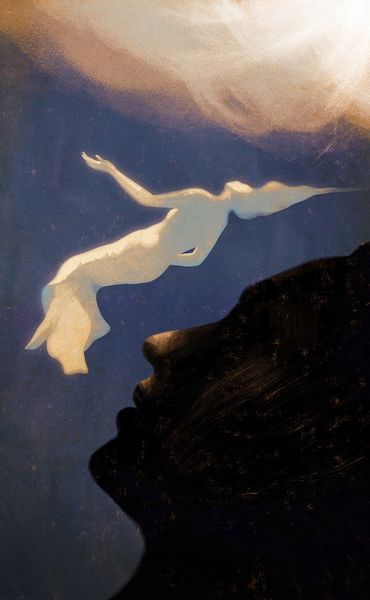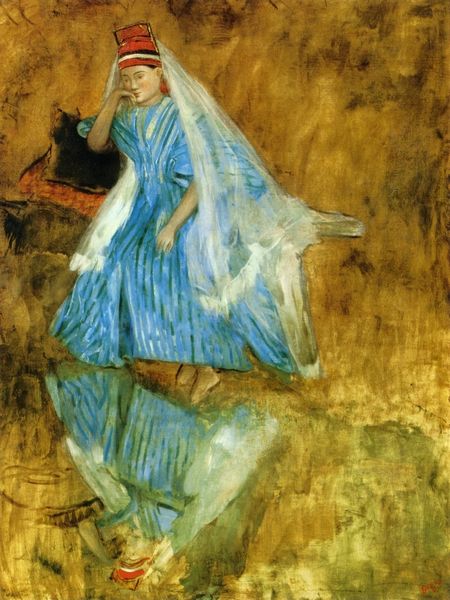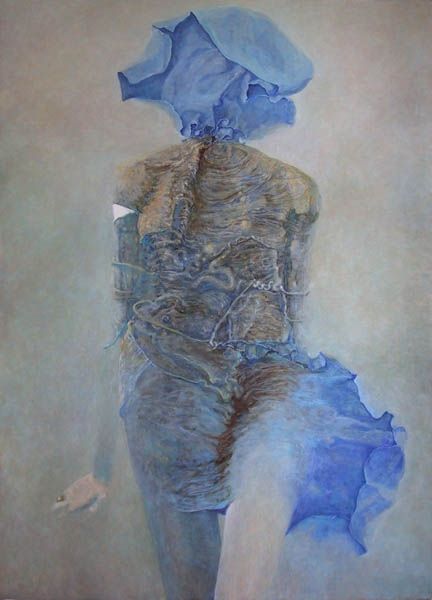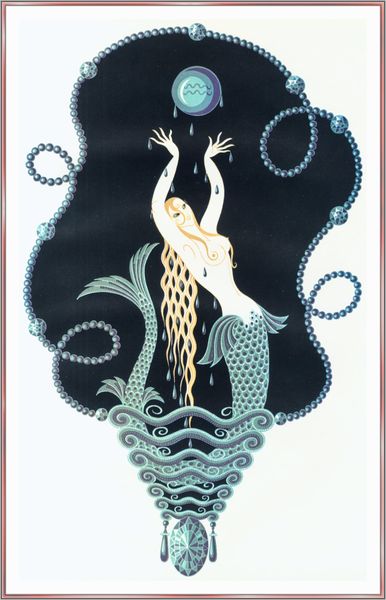
painting
#
painting
#
asian-art
#
landscape
#
figuration
#
orientalism
#
miniature
Copyright: Hossein Behzad,Fair Use
Editor: Here we have Hossein Behzad's "The Big Cypress," painted in 1955. It's a miniature painting, dominated by a stunning, almost monochromatic, blue palette. The figure seems to be enmeshed in nature, perhaps even surrendering to it. What’s your interpretation of this piece, especially considering its historical context? Curator: Considering its historical background, it reflects a fascinating period in Iranian art. Behzad was instrumental in revitalizing traditional Persian miniature painting, but his work also coincided with significant social and political shifts in Iran. What strikes me is the tension between the subject’s seeming submission, as you described it, and the vibrant life bursting from the cypress. Does it convey a negotiation between tradition and modernity in Iranian society? What do you make of that interplay? Editor: I see that tension now. The figure's posture does suggest a yielding, but the details in her clothing and the surrounding cypress tree feels quite intentional and even powerful. Curator: Exactly. This echoes the complex public role of art. Traditional art forms, like miniature painting, served as symbols of national identity. However, artists like Behzad grappled with how these forms could reflect contemporary life and societal aspirations in a rapidly changing world. Do you think that museums exhibiting such art influence this perception? Editor: Definitely. Museums curate not only art, but meaning. The choices they make about display and context actively shape our understanding of the art and its cultural significance. Looking again, that deliberate framing emphasizes a sense of Iranian identity in the face of Western influence. It's much more than just aesthetic appreciation. Curator: Precisely! The placement and interpretation in cultural institutions shape the reception and, indeed, the ongoing life of such potent imagery. Editor: I’ve certainly gained a new perspective. Thanks for pointing out how historical and social contexts shape the artwork! Curator: And you, for reminding me about the powerful role institutions have on influencing that perception!
Comments
No comments
Be the first to comment and join the conversation on the ultimate creative platform.

